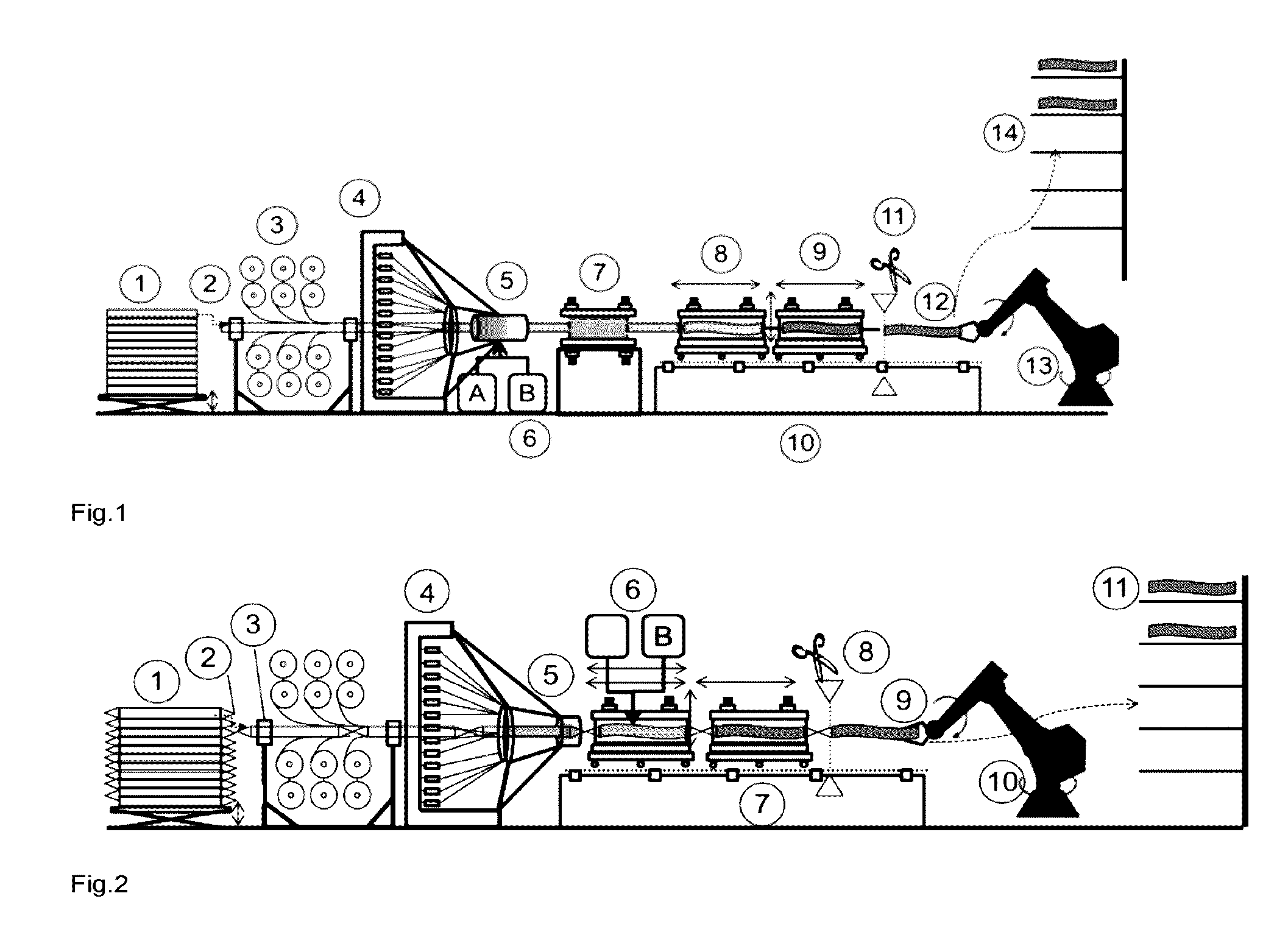Continuous production of profiles in a sandwich type of construction with foam cores and rigid-foam-filled profile
- Summary
- Abstract
- Description
- Claims
- Application Information
AI Technical Summary
Benefits of technology
Problems solved by technology
Method used
Image
Examples
Embodiment Construction
[0086]Continuous production of a complex fibre-composite profile with a rigid PMI foam core:
[0087]ROHACELL® IG-F 51 foam cores are cut to size to give elongate rectangular shapes and then introduced continuously by a guiding system into the plant. In a step that follows, these are sheathed with dry and presaturated fibres: unidirectionally 90 fibres each 1600 tex (Toho Tenax T1600) and 48 fibres each 800 tex (Toho Tenax T800). In the preform mould all of the materials are consolidated and subjected to final saturation with a vinyl ester resin. The fibre-composite material (pultrudate), not yet hardened, is then continuously drawn into a displaceable and heatable compression device (compression device number 1) by way of a compression device for cooling (compression device number 2). The shaping and hardening then take place here. The hardening time is kept short by using a temperature suitable for these materials: 120° C. As soon as the profile has hardened, compression device numbe...
PUM
| Property | Measurement | Unit |
|---|---|---|
| Density | aaaaa | aaaaa |
| Adhesion strength | aaaaa | aaaaa |
| Energy | aaaaa | aaaaa |
Abstract
Description
Claims
Application Information
 Login to view more
Login to view more - R&D Engineer
- R&D Manager
- IP Professional
- Industry Leading Data Capabilities
- Powerful AI technology
- Patent DNA Extraction
Browse by: Latest US Patents, China's latest patents, Technical Efficacy Thesaurus, Application Domain, Technology Topic.
© 2024 PatSnap. All rights reserved.Legal|Privacy policy|Modern Slavery Act Transparency Statement|Sitemap


